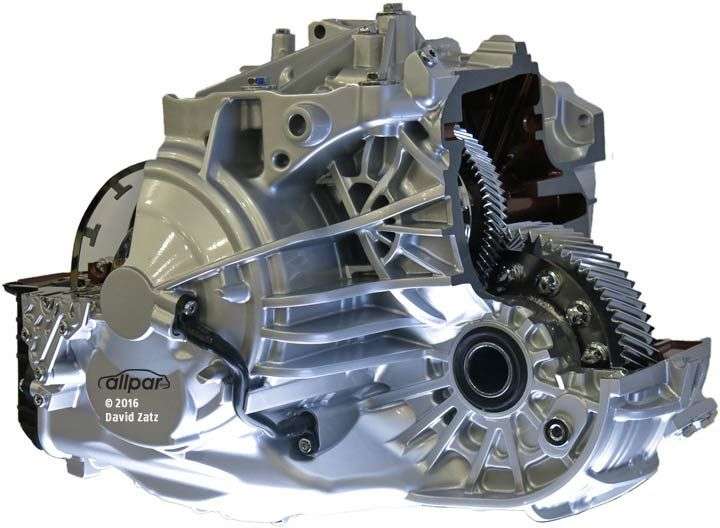The automotive world is constantly evolving, driven by the relentless pursuit of efficiency and performance. One significant advancement in recent years has been the widespread adoption of the 9 speed automatic transmission cars. These sophisticated gearboxes offer a compelling blend of improved fuel economy, enhanced acceleration, and smoother driving experiences. The 9 speed automatic transmission is no longer a novelty; it’s rapidly becoming the standard in many vehicle segments, from luxury sedans to SUVs and even some pickup trucks. This article will delve into the benefits and impact of this groundbreaking technology.
The Rise of the 9 Speed Automatic Transmission
For decades, automatic transmissions remained relatively unchanged, typically featuring 4, 5, or 6 gears. However, as fuel economy standards tightened and consumer demand for performance increased, engineers sought innovative solutions. The 9 speed automatic transmission emerged as a key strategy to meet these demands. By offering a wider range of gear ratios, these transmissions allow engines to operate more frequently in their optimal efficiency range, leading to significant fuel savings.
Key Advantages of 9 Speed Transmissions
- Improved Fuel Economy: More gears allow the engine to stay in its most efficient RPM range more often, reducing fuel consumption.
- Enhanced Acceleration: Closer gear ratios provide smoother and quicker acceleration, especially from a standstill.
- Reduced Engine Noise: The transmission can keep the engine at lower RPMs during cruising, resulting in a quieter and more comfortable ride.
- Smoother Shifting: The increased number of gears allows for smaller RPM drops between shifts, creating a seamless and refined driving experience.
How 9 Speed Transmissions Work
The core principle behind a 9 speed automatic transmission is relatively simple: divide the available engine power across a greater number of gears. This allows the transmission control unit (TCU) to select the optimal gear for any given driving condition, maximizing efficiency and performance. Complex algorithms manage the shifting process, taking into account factors like vehicle speed, throttle position, and driver input.
Challenges in Design and Implementation
Designing and implementing a 9 speed automatic transmission is not without its challenges. The increased number of components requires a more compact and sophisticated design. Precise calibration of the TCU is also crucial to ensure smooth and predictable shifting behavior. Furthermore, the transmission must be robust enough to withstand the increased stresses associated with more frequent gear changes.
Popular Cars Featuring 9 Speed Automatic Transmissions
Many manufacturers have embraced the 9 speed automatic transmission in their vehicles. Some notable examples include:
- Jeep Cherokee: One of the first mainstream vehicles to adopt the 9-speed.
- Honda Odyssey: Provides smooth and efficient performance in this popular minivan.
- Range Rover Evoque: Contributes to a refined driving experience.
- Acura TLX: Offers enhanced performance and fuel economy.
The future of automotive transmissions is undeniably headed towards greater sophistication and efficiency. The adoption of 9 speed automatic transmission cars has clearly demonstrated the benefits of more gears and intelligent control systems. As technology continues to evolve, we can expect even more advanced transmission designs to emerge, further enhancing the driving experience and minimizing our environmental impact.
THE FUTURE OF AUTOMATIC TRANSMISSIONS: BEYOND 9 SPEEDS?
While 9-speed automatics have become prevalent, the automotive industry is constantly pushing boundaries. The question arises: what comes next? Will we see 10-speed, 11-speed, or even higher gear count transmissions? While technically feasible, the law of diminishing returns starts to kick in. The marginal gains in fuel economy and performance become smaller with each additional gear, while the complexity and cost of the transmission increase significantly.
ALTERNATIVE TECHNOLOGIES
Instead of simply adding more gears, many manufacturers are focusing on alternative technologies to improve efficiency and performance. These include:
– Continuously Variable Transmissions (CVTs): Offer an infinite number of gear ratios within a specific range, providing optimal engine efficiency.
– Dual-Clutch Transmissions (DCTs): Provide lightning-fast shifts and seamless power delivery, often found in high-performance vehicles.
– Electrification: Electric vehicles (EVs) don’t require traditional multi-gear transmissions, relying instead on single-speed or two-speed gearboxes; Hybrid vehicles also incorporate electric motors that can supplement or replace the engine’s power, reducing the need for numerous gears.
ARE 9 SPEED TRANSMISSIONS RIGHT FOR EVERYONE?
While the benefits of 9-speed automatic transmissions are undeniable, they may not be the perfect choice for every driver or vehicle. In some cases, the added complexity can lead to increased maintenance costs and potential reliability issues. Furthermore, the optimal performance of a 9-speed transmission depends heavily on proper tuning and calibration. A poorly calibrated transmission can result in jerky shifts, delayed responses, and a less-than-ideal driving experience.
FACTORS TO CONSIDER
Before choosing a vehicle with a 9-speed automatic transmission, consider the following:
– Driving Style: Aggressive drivers may prefer the responsiveness of a DCT, while those prioritizing fuel economy may find a CVT more suitable.
– Vehicle Type: The benefits of a 9-speed transmission are more pronounced in larger, heavier vehicles like SUVs and trucks.
– Maintenance Requirements: Research the maintenance schedule and potential repair costs associated with the specific 9-speed transmission in question.
– Test Drive: Always test drive the vehicle thoroughly to assess its shifting behavior and overall driving experience.
In conclusion, the rise of 9 speed automatic transmission cars represents a significant step forward in automotive technology. While they offer numerous advantages in terms of fuel economy and performance, it’s essential to consider individual needs and preferences before making a purchasing decision. Ultimately, the best transmission is the one that best suits your driving style and the intended use of the vehicle. As the automotive landscape continues to evolve, we can expect even more innovative and efficient transmission technologies to emerge, shaping the future of driving.





